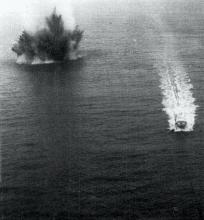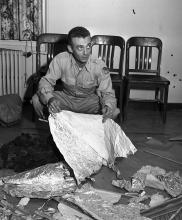Listen to today's episode of StarDate on the web the same day it airs in high-quality streaming audio without any extra ads or announcements. Choose a $8 one-month pass, or listen every day for a year for just $30.
You are here
New Year’s Eve
New York celebrated New Year’s Eve of 1904 with a bang — a fireworks display atop the brand-new offices of the New York Times. The show was repeated over the following couple of years. By 1907, though, the fireworks had been banned. So the Times came up with a new lightshow: a 700-pound ball of iron and wood festooned with a hundred 25-watt bulbs. It dropped to the bottom of a long pole at midnight — marking the arrival of 1908.
The New York time ball is much more elaborate now — it weighs six tons, and consists of more than 30,000 LED lights and 2700 crystal triangles. Yet it’s continuing a tradition that began in the early 19th century — marking time by dropping a ball.
The first time balls were set up in England. They provided the precise time to ship’s navigators. The navigators needed to know the correct time to plot their longitude. Many time balls were operated by observatories, which determined the time by plotting the Sun’s highest point in the sky.
The first American time ball was at the U.S. Naval Observatory, at Washington, D.C., in 1845. A few years later, the observatory began sending the time to New York via telegraph. There, a time ball atop the Western Union building dropped at noon.
Time balls were operated well into the 20th century — until their function was replaced by radio. But New York’s time ball continues to drop — beginning its journey at 11:59 p.m. and ending at midnight.
Script by Damond Benningfield





